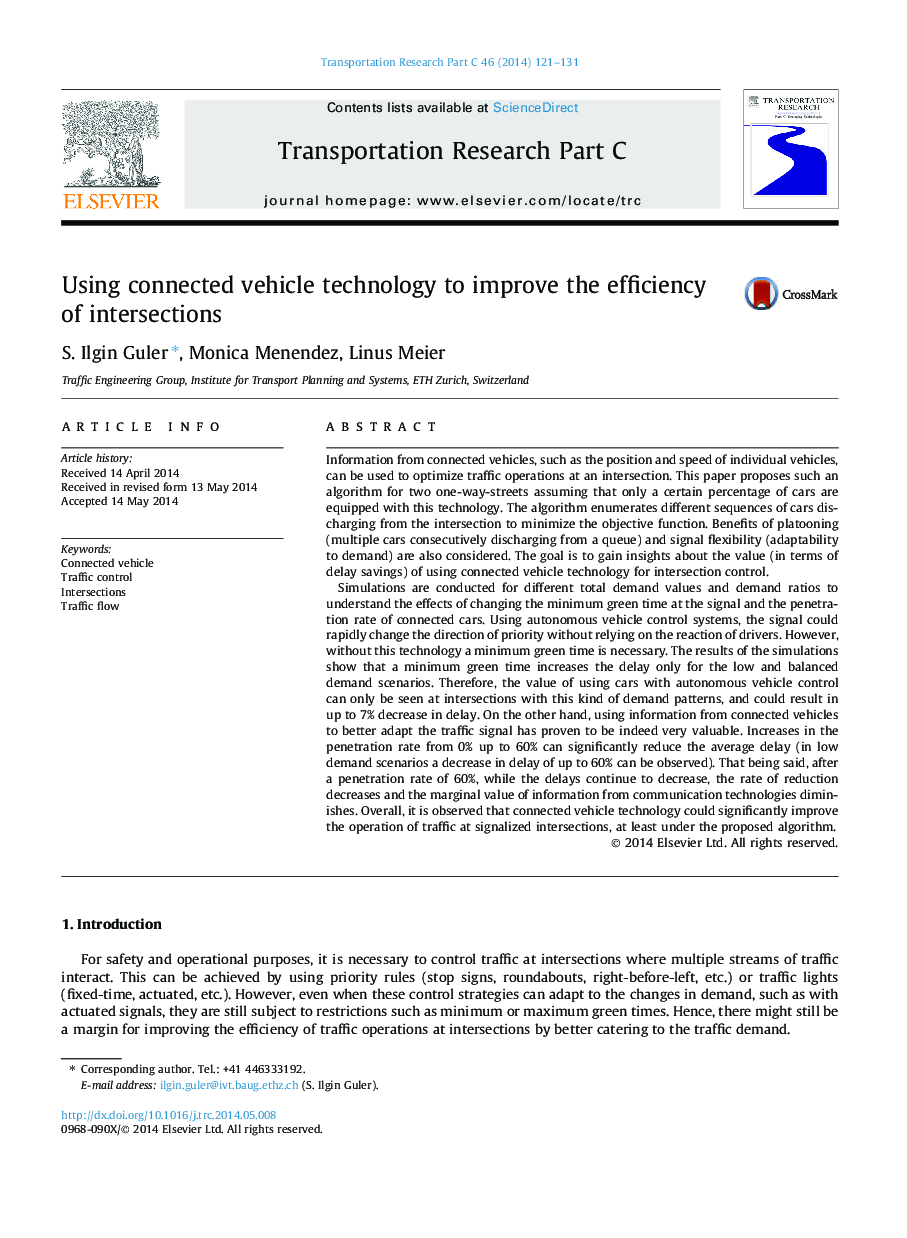| Article ID | Journal | Published Year | Pages | File Type |
|---|---|---|---|---|
| 6937087 | Transportation Research Part C: Emerging Technologies | 2014 | 11 Pages |
Abstract
Simulations are conducted for different total demand values and demand ratios to understand the effects of changing the minimum green time at the signal and the penetration rate of connected cars. Using autonomous vehicle control systems, the signal could rapidly change the direction of priority without relying on the reaction of drivers. However, without this technology a minimum green time is necessary. The results of the simulations show that a minimum green time increases the delay only for the low and balanced demand scenarios. Therefore, the value of using cars with autonomous vehicle control can only be seen at intersections with this kind of demand patterns, and could result in up to 7% decrease in delay. On the other hand, using information from connected vehicles to better adapt the traffic signal has proven to be indeed very valuable. Increases in the penetration rate from 0% up to 60% can significantly reduce the average delay (in low demand scenarios a decrease in delay of up to 60% can be observed). That being said, after a penetration rate of 60%, while the delays continue to decrease, the rate of reduction decreases and the marginal value of information from communication technologies diminishes. Overall, it is observed that connected vehicle technology could significantly improve the operation of traffic at signalized intersections, at least under the proposed algorithm.
Related Topics
Physical Sciences and Engineering
Computer Science
Computer Science Applications
Authors
S. Ilgin Guler, Monica Menendez, Linus Meier,
